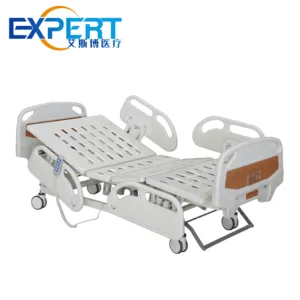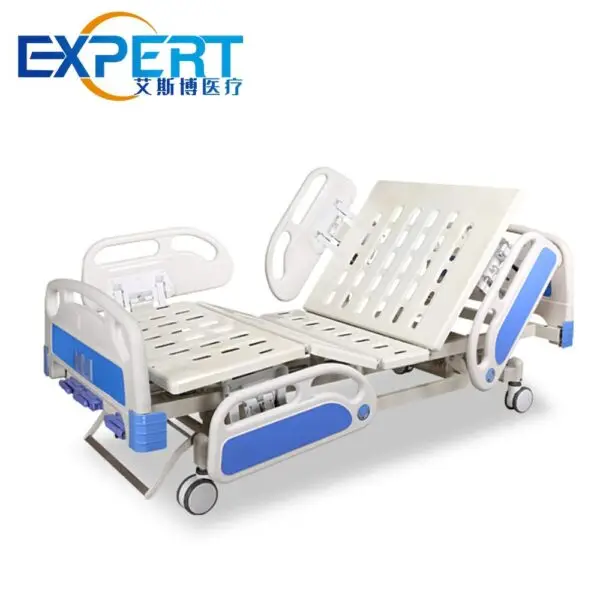Адрес
304 North Cardinal St.
Дорчестер-центр, Массачусетс 02124
Часы работы
С понедельника по пятницу: с 7:00 до 19:00.
Выходные: 10.00 - 17.00
Добро пожаловать в мой блог!
Прежде чем мы углубимся в содержание, если вы заинтересованы в нашей продукции или у вас есть какие-либо вопросы, пожалуйста, посетите наш Свяжитесь с нами на странице на сайте. Наша команда готова помочь вам с вопросами, заказами и любой необходимой поддержкой.
Итак, давайте начнём наше совместное путешествие. Надеюсь, вы найдете здесь познавательный, интересный и ценный контент.

Hospital bed size dimensions play a crucial role in healthcare settings, impacting patient comfort, safety, and the overall efficiency of care delivery. Understanding these dimensions is essential for healthcare providers, facility managers, and architects involved in designing patient rooms. This blog will explore the various hospital bed size dimensions, their significance, and the factors to consider when selecting the right bed for specific healthcare needs.
The dimensions of hospital beds are not just about space; they significantly affect patient care. Proper hospital bed size dimensions ensure that:
A comprehensive understanding of hospital bed size dimensions enhances the quality of care delivered in medical facilities.
| Фактор | Описание |
|---|---|
| Размер пациента | Different patients require various bed dimensions. |
| Treatment Needs | Specific medical conditions may necessitate special beds. |
| Room Dimensions | Available space in patient rooms affects bed size selection. |
| Mobility Requirements | Patients with mobility issues may need larger beds for safety. |









Hospital beds come in various types, each designed for specific uses. Here’s a breakdown of common types and their hospital bed size dimensions.
Standard hospital beds are the most commonly used in healthcare facilities. Their typical dimensions are:
These beds are adjustable in height and often come equipped with side rails for added safety.
Pediatric beds cater specifically to children. Their dimensions generally include:
Designed with lower heights, these beds help prevent falls and ensure safety for younger patients.
Bariatric beds accommodate larger patients, providing extra width and weight capacity. Typical dimensions are:
These beds have reinforced frames to support increased weight and ensure patient safety.
Intensive Care Unit (ICU) beds are designed for critically ill patients and offer advanced features. Their dimensions are typically:
ICU beds often include features like built-in scales, adjustable height, and specialized positioning capabilities.
| Тип кровати | Длина (дюймы) | Ширина (дюймы) | Функции |
|---|---|---|---|
| Стандартная больничная койка | 80 | 36 | Adjustable height, side rails |
| Детская больничная койка | 63 | 30 | Lower height, safety features |
| Бариатрическая больничная койка | 80 | 48 | Reinforced frame, higher weight capacity |
| Кровать в отделении интенсивной терапии | 85 | 40 | Built-in scales, advanced positioning options |


Choosing the appropriate hospital bed size dimensions involves several considerations:
Comfort is essential in healthcare settings. Selecting a bed with the right dimensions for the patient’s size and weight enhances comfort and supports better recovery outcomes. A bed that is too small or too large can lead to discomfort, pressure sores, or difficulty in positioning, which can hinder recovery. Additionally, beds with adjustable features such as head and foot elevation provide more flexibility, ensuring patients are more comfortable during long periods of bed rest.
Certain medical conditions may necessitate specific types of beds. For instance, patients needing frequent repositioning might benefit from an ICU bed that allows for various adjustments. Specialized beds may also be required for patients with conditions like respiratory issues, bed sores, or spinal injuries, ensuring optimal positioning for their treatment. Some beds come with advanced features like automated positioning, which reduces the physical strain on healthcare providers and ensures that the patient remains in the ideal position for recovery.
The dimensions of the hospital room significantly influence bed size selection. Ensure sufficient space around the bed for staff to perform necessary medical procedures and for patients to move safely. It’s also important to consider the placement of other medical equipment such as IV poles, monitors, or oxygen tanks, which should be easily accessible without obstructing the patient’s or caregiver’s movement. A well-designed room layout can improve workflow and ensure both patient and staff comfort.
Patients with limited mobility may require larger beds with safety features, such as side rails or lower heights, to facilitate easier access and reduce the risk of falls. Additionally, these patients may benefit from beds with adjustable height settings, allowing them to be raised or lowered to a more accessible level for transfers. Beds designed for easier maneuverability also allow for more effective caregiving and reduce the risk of injury for both the patient and caregivers during movement.

Modern hospital beds incorporate various features designed to improve patient care. Some of these innovations include:
Many hospital beds offer height adjustments, enabling caregivers to work comfortably and making it easier for patients to get in and out of bed. This feature also minimizes the physical strain on healthcare staff by allowing them to adjust the bed to a height that suits their work. For patients, a bed that can be lowered or raised can aid in comfort and accessibility, especially for those with mobility issues or during post-operative recovery.
Some beds can be adjusted to the Trendelenburg position, where the patient’s head is lower than their feet, beneficial in specific medical emergencies. This position is often used to improve blood circulation, especially in patients experiencing shock or low blood pressure, by helping blood flow back toward the heart. Additionally, the reverse Trendelenburg position, where the feet are lower than the head, may be used to aid in respiratory distress or facilitate certain medical procedures.
ICU and bariatric beds may have built-in scales, allowing weight monitoring without moving patients, thus enhancing comfort and safety. This feature is particularly helpful in critical care settings where frequent weight checks are necessary to track fluid retention or weight loss. Built-in scales also reduce the risk of injury to both patients and caregivers by eliminating the need for manual transfers to weigh the patient, making the process more efficient and less invasive.
Wheels and locking mechanisms enable easy movement of beds within a healthcare facility, allowing staff to reposition beds as needed. These features are especially important in hospitals where patient care areas may need to be rearranged quickly in response to emergencies or routine cleaning. Locking mechanisms ensure the bed remains securely in place once positioned, providing stability and preventing accidental movement, which is crucial for patient safety.
Понимание больничная койка size dimensions is vital for providing high-quality patient care. From standard beds to specialized ICU beds, the right size and features significantly impact patient comfort, safety, and recovery. By considering factors such as patient size, medical needs, and room dimensions, healthcare providers can make informed decisions that enhance the overall quality of care.
What are the standard dimensions of a больничная койка?
The standard dimensions for a hospital bed are typically 80 inches in length and 36 inches in width.
How do I choose the right hospital bed size?
Consider the patient’s size, medical requirements, room dimensions, and mobility needs when selecting the appropriate bed size.
Есть ли там больничные койки specifically for children?
Yes, pediatric hospital beds are designed for children, usually measuring 63 inches in length and 30 inches in width.
What is a bariatric hospital bed?
A bariatric hospital bed is designed for larger patients and typically measures 80 inches in length and 48 inches in width, with a reinforced frame for added safety.
How important are размеры больничной койки in patient care?
Proper hospital bed size dimensions are crucial for ensuring patient comfort, safety, and facilitating effective medical care.
